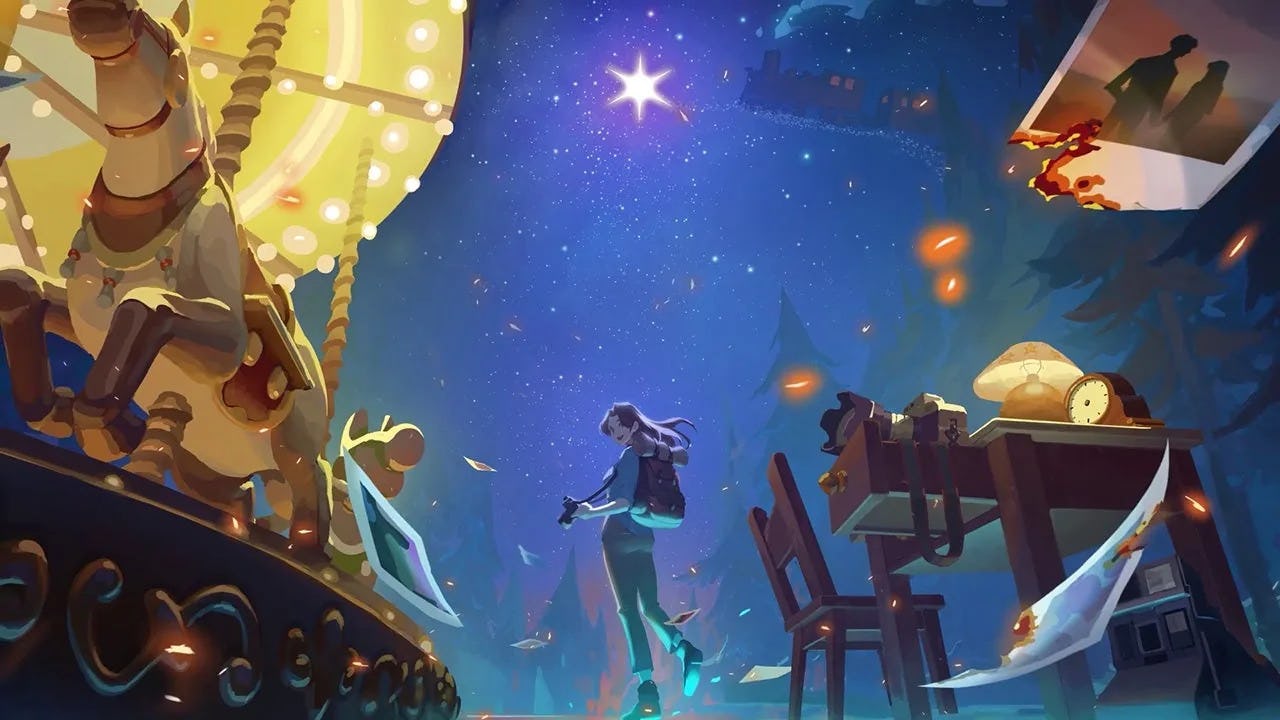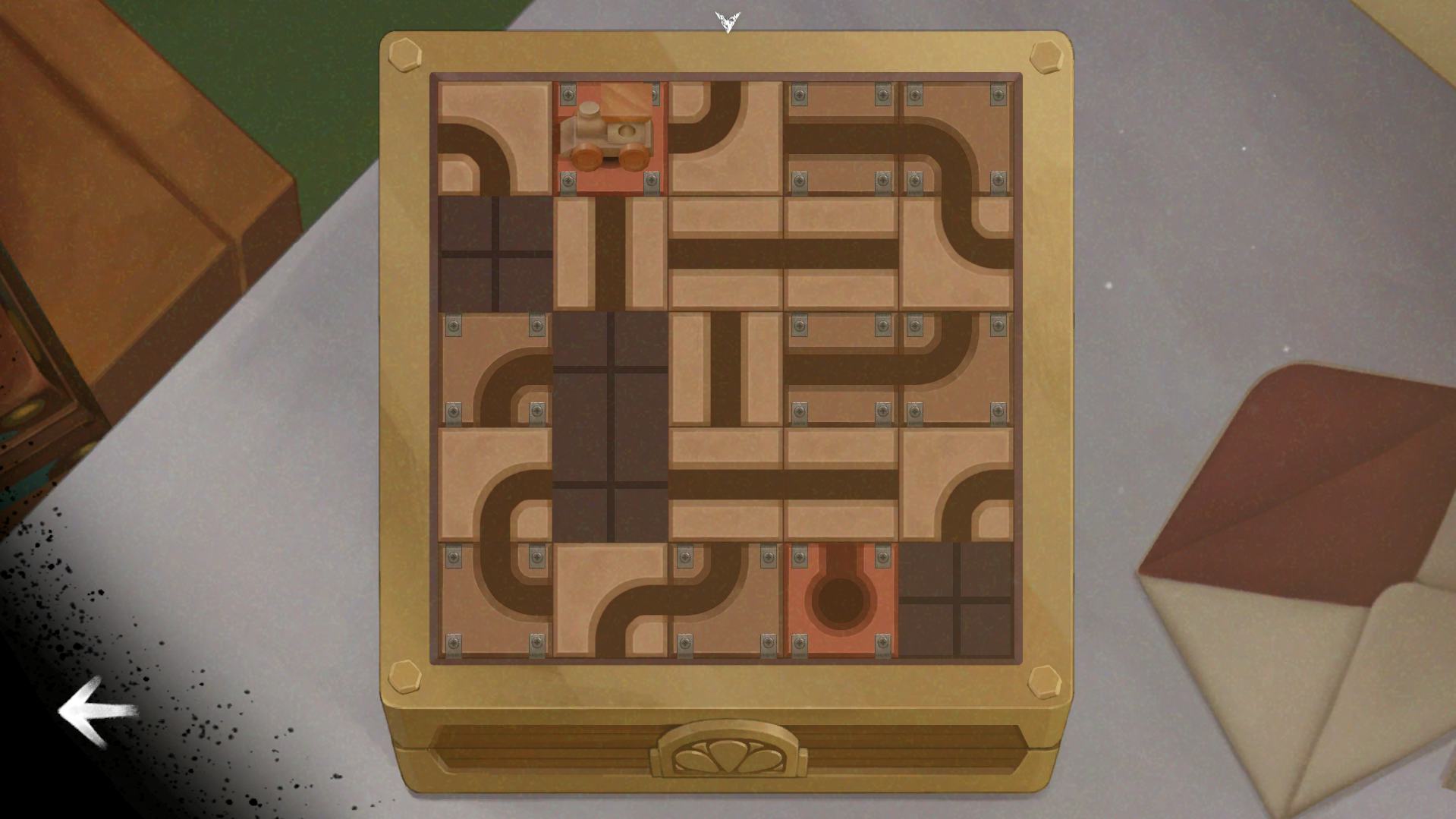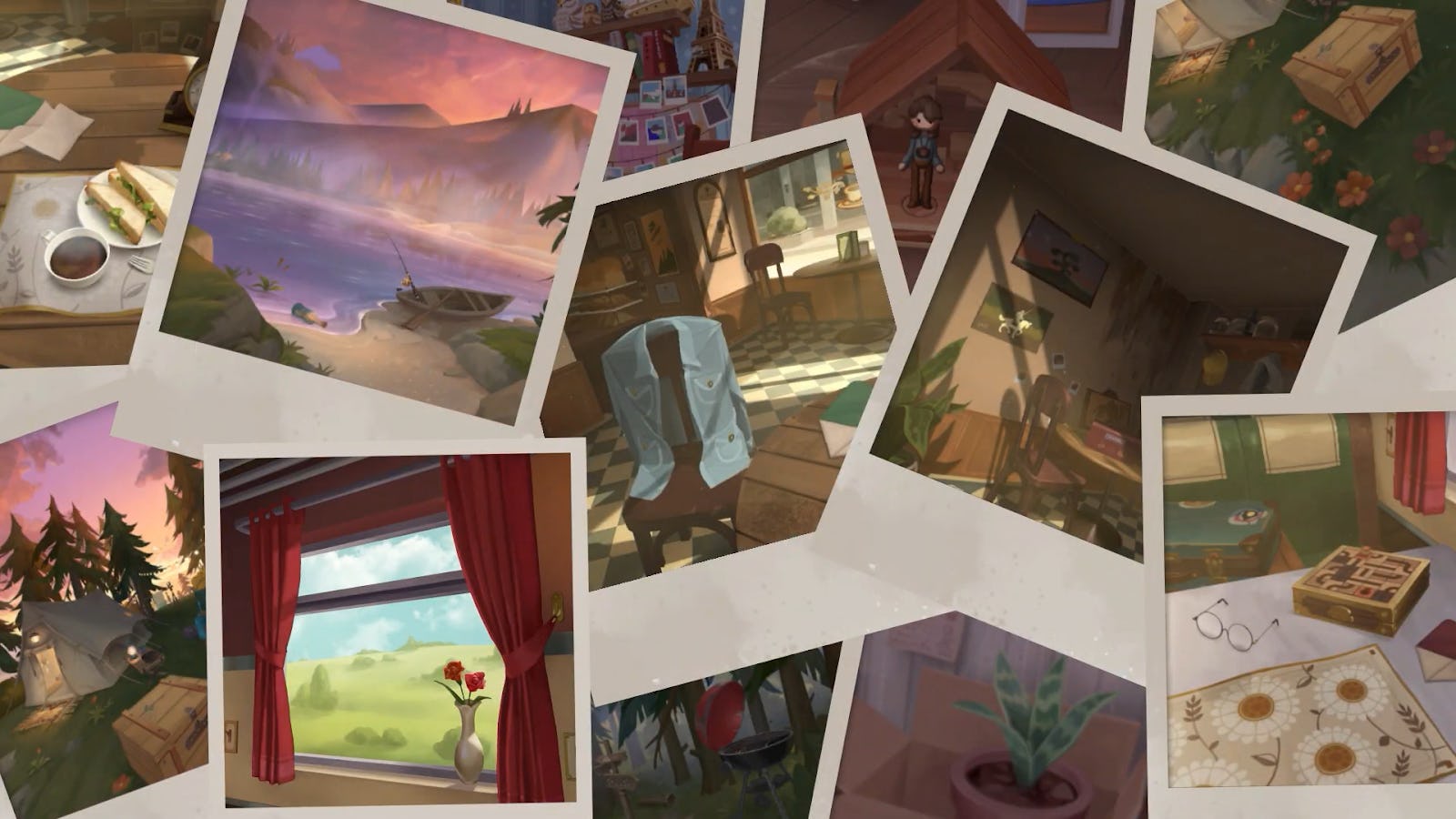
Photography has the power to preserve the most important moments of your life, or make the past look better than it really was. Just think of a candid snapshot taken during a joyful party, compared to a smiling vacation photo taken in the midst of a miserable vacation. The Star Named Eos is a new puzzle game that explores those contradictory roles photography can hold in our lives, but fails to develop any deeper meaning.
The Star Named Eos follows a boy named Dei, who’s following in the footsteps of his photographer mother. The game starts in Dei’s room, which introduces how this photographic adventure will play out. Dei has in his possession a photo taken by his mother, pointed at the window in his room. A pair of red curtains are open to let the sun in, and a red rose sits in a vase on the sill. To move forward, Dei needs to recreate the photo by gathering the curtains, vase, and flower through solving puzzles around the room. The solutions to these puzzles are hidden throughout the room — in symbols drawn on the walls, in dates used as lock combinations, and in details of books stored there.
For this first set of puzzles, The Star Named Eos worked for me. Dei is tracking down his mother using memories from his own life, so there’s some sense to why he would use an important date or a beloved children’s book as the answer to a riddle. That stops being the case quickly. After completing Dei’s room, you move on to a train, a café, and a campsite in the wilderness. In these locations, the connection to Dei’s past disappears. You’re still solving puzzles largely the same way, by finding clues in the environment, but they’ve lost the personal connection to Dei, which leaves them feeling hollow.
That thematic mismatch might not have been such a big deal if the puzzles themselves were particularly engaging, but unfortunately, there’s nothing here fans of puzzle games haven’t seen before. In addition to escape room-like environmental clues, there are puzzles involving sliding blocks, stacking dishware from large to small, and guiding a key through a maze. They’re the kind of puzzles that feel like filler, neither revealing anything about the game’s world or asking you to think in a different way.

Even The Star Named Eos’ more original puzzles have a glaring lack of one thing — photography. Each stage ends with Dei taking a picture of the scene he’s recreated from his mom’s photo album, but photography doesn’t play into puzzle solutions at all. One puzzle requires you to cut up photographs to form a new image, but you have to find the photo already in the environment rather than taking it yourself. After a mid-game twist, you’ll revisit each of the game’s puzzle rooms in a changed form, and there you can take photos to affect the environment in small ways, like snapping a picture of a cat that then cleans itself. Altering photos or manipulating the environment with your camera seem like natural ways to help solve puzzles, but unfortunately nothing is ever made of these mechanics.
The narrative twist at the heart of The Star Named Eos unfortunately falls as flat as the game’s puzzles. After following his mother’s trail to a few locations, Dei winds up back at his home, finding it in ruins. It’s revealed here that his mother was a photojournalist covering a military conflict that broke out when he was a child, and her photos were mementos from her travels as a reporter. At this point, you revisit the sites of her photos, but as she actually saw them. The charming café you visit early on is being used as a field hospital for the wounded. The campsite is in the middle of a forest burned by the conflict. But rather than examining the gulf between Dei’s imagined reality and the life his mother actually lived, The Star Named Eos simply shows these devastated scenes in succession, leaving them practically uncommented on.

Like Dei’s camera, this revelation also feels like fertile ground to explore through puzzles. What would it mean to use the game’s puzzle mechanics to reveal the truth, or to work through Dei’s grief over learning what his mother really went through? The Star Named Eos doesn’t have an answer.
The gap between idyllic imagination and harsh reality is a fascinating space to set a game in, but The Star Named Eos seems more interesting in presenting its twist than working out what it all means. In the end, that idea feels just like its camera — a clever premise that ultimately adds up to very little. One thing the game undoubtedly has going for it is that it’s gorgeous to look at, but if there’s one thing the story at its core gets right, it’s that a pretty picture is sometimes just cover for a disappointing truth.







